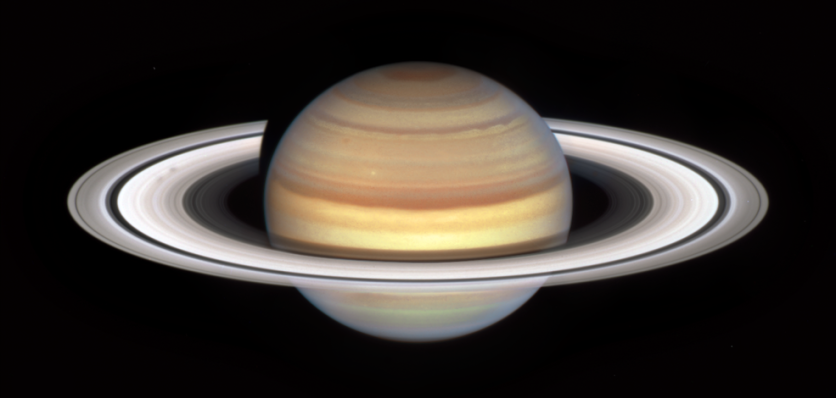NASA's Hubble Space Telescope has captured a new "spoke season" surrounding Saturn's equinox, where enigmatic features form across its rings.
The spokes' origin and seasonal fluctuations remain shrouded in mystery and planetary scientists are still unable to explain them even to this day, according to NASA.

Saturn's Autumnal Equinox
When the summer or winter solstices of Saturn are approaching, the spokes eventually vanish. However, the spokes are projected to become more noticeable and detectable as the autumnal equinox of Saturn's northern hemisphere on May 6, 2025, approaches.
The planet's fluctuating magnetic field is believed to be the cause of the spokes. NASA explains that solar wind and planetary magnetic fields combine to produce an electrically charged environment.
According to scientists, even the tiniest dust-sized icy ring particles have the potential to charge up and rise momentarily above the surrounding larger frozen particles and boulders.
Early in the 1980s, NASA's Voyager spacecraft made the first detection of the ring spokes. Depending on the lighting and viewing angles, the fleeting, enigmatic forms can appear dark or light.
"Thanks to Hubble's OPAL program, which is building an archive of data on the outer solar system planets, we will have longer dedicated time to study Saturn's spokes this season than ever before," NASA senior planetary scientist Amy Simon, head of the Hubble Outer Planet Atmospheres Legacy (OPAL) program, said in a statement.
Cassini's Observations
Saturn's most recent equinox happened in 2009, while NASA's Cassini spacecraft was orbiting the planet for up-close research.
Since the Voyager spacecraft has been long gone and Cassini's mission ended in 2017, Hubble is carrying on the task of long-term monitoring of changes on Saturn.
The precise beginning and length of the spoke season are still uncertain, despite years of superb data provided by the Cassini probe, according to Simon.
The three other gas giant planets in our solar system also have ring systems, but none of them can match Saturn's striking rings, which serve as a research facility for spoke phenomena.
Hubble's OPAL program will supplement the collection of Cassini observations with visual and spectroscopic data in light-wavelength ranges from ultraviolet to near-infrared.
This will ultimately help scientists to understand the enigma behind the spoke phenomenon and what it implies about ring physics.
Related Article : NASA's Hubble Space Telescope Detects Isolated Black Hole For The First Time; What Makes This Black Hole Different From Others?

ⓒ 2025 TECHTIMES.com All rights reserved. Do not reproduce without permission.




